Saskia C. Quené • University of California, Berkeley
Recommended Citation: Saskia C. Quené, “Figures, Grounds, and Gold: Relocating the Madonna of Humility,” Different Visions: New Perspectives on Medieval Art 9 (2023). https.//doi.org/10.61302/YAGI7299.
This paper examines figures, grounds, and gold in two panel paintings by Fra Angelico with restricted accessibility: His Madonna dell’Umiltà from the State Hermitage Museum in St. Petersburg, Russia (fig. 1) and his Virgin and Child from The Alana Collection (fig. 2).[1] I initially draw attention to the interplay of forms, lines, metals, and pigments through close looking and material analysis. In doing so, I explore Angelico’s representation of humility, arguing that the painter and monk reflects on the close connection between “humilitas” (humility) and “humus” (ground) visually, theologically, and theoretically, enabling contemplation on the subject of “ground.” To better comprehend Angelico’s visual strategies, I connect his way of employing materials and techniques to observations of the Danish psychologist Edgar Rubin. Yet, this essay nevertheless critiques the usage of modernist terms like “figure” and “ground,” and proposes to expand the iconographic scope of the Madonna dell’Umiltà by discussing the place of “ground” in gold leaf panel painting.

Figure 1. Fra Angelico, Madonna dell’Umiltà, ca. 1415–19. Mixed media with gold on panel, 81 × 51 cm. Hermitage Museum, St. Petersburg (4115).
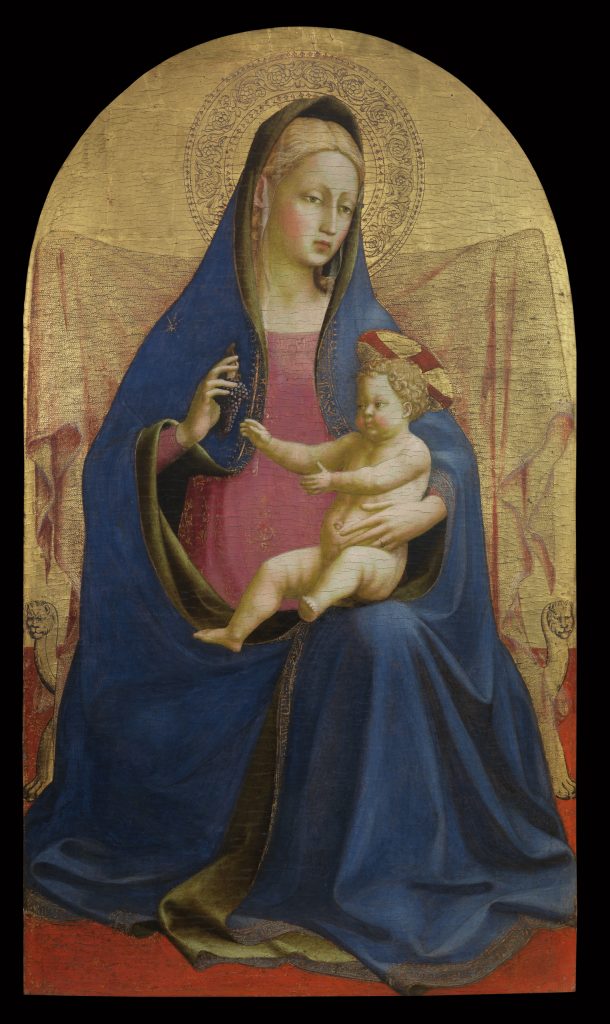
Figure 2. Fra Angelico, Madonna and Child, ca. 1420–22. Mixed media with gold on panel, 100.5 × 57.9 cm. The Alana Collection.
Covering ground
Thinly hammered gold leaf covers almost the entire surface of Fra Angelico’s Madonna dell’Umiltà from the Hermitage Museum in St. Petersburg, from the top near the now-lost frame to the very bottom of the wooden panel (fig. 1).[2] In the staggered layers of metal, paints, and pigments, it is precious gold that provides the ground for the depiction of the seated Virgin. Mary is dressed in a red garment, a dark blue cloak, and a golden nimbus. Complemented by a diaphanous veil, delicate golden linings on the trim of her blue mantle define the lavish robe that lies in heavy folds across the floor. She rests on a slender silk pillow while holding the Christ child on the left knee.
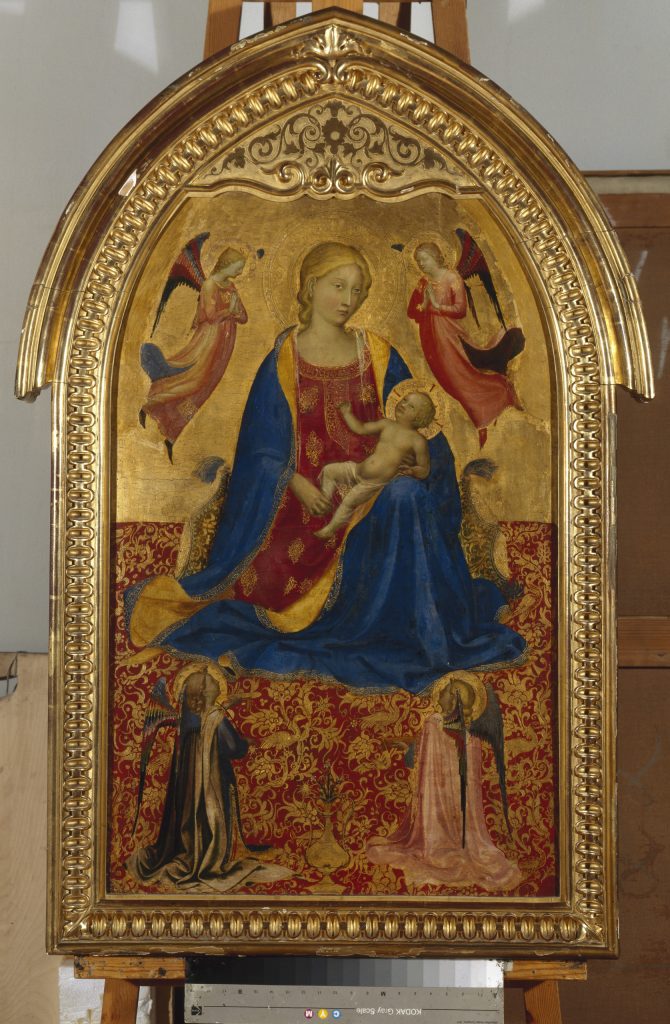
Figure 3. Fra Angelico, Madonna dell’Umiltà, ca. 1415–19. Mixed media with gold on panel, 81 × 51 cm. Hermitage Museum, St. Petersburg (4115).
The picture plane can be divided into two zones: At the top, two angels in vivid crimson silks stand out against the gilded surface. Here, the three nimbi guide the play of light in the gleaming ground. In the lower part, two haloed angels with instruments turn their colorful and sharply foreshortened wings toward the spectator, while the plane is dominated by the intricate design of a textile. Calyxes, vines, and birds, spirals, and star-shaped ornaments form a dense weave that remains parallel to the picture plane. Reversing their realities, the two pairs of angels stand out against two distinct grounds and, in this case, realms. The panel’s lower margin is marked by the base of a golden vase holding three white lilies (fig. 4).
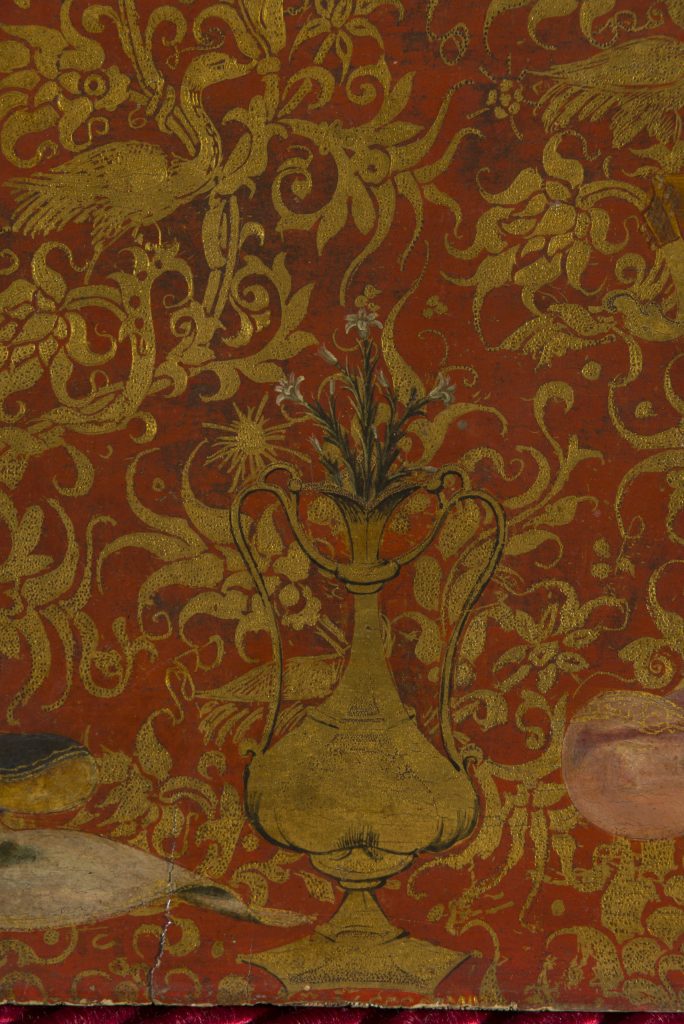
Figure 4. Detail of Fra Angelico, Madonna dell’Umiltà, ca. 1415–19. Mixed media with gold on panel, 81 × 51 cm. Hermitage Museum, St. Petersburg (4115).
Mary’s locus, her place within the pictorial space bounded by the lower red-and-gold textile and the upper gold ground, remains unstable. With dark blue pigment standing out against the gold leaf, the shape of her figure appears as a solid form against her surroundings. Her body is contoured almost sculpturally, while the outlines of the vase and the slender silk pillow graphically emphasize the absence of a throne.[3] In refraining from straining any volume, the pillow almost blends in with the vegetal pattern of the red-and-gold textile (fig. 5). Likewise, the figure of the vase with the three lilies remains emphatically un-contoured. Nothing beyond its outline sets the depicted object apart from the red-and-gold fabric. Finally, a third distinctive method used by Fra Angelico to distinguish forms can be observed in the red-and-gold fabric itself. Here, Fra Angelico relies entirely on the material distinction between red color and gold leaf.
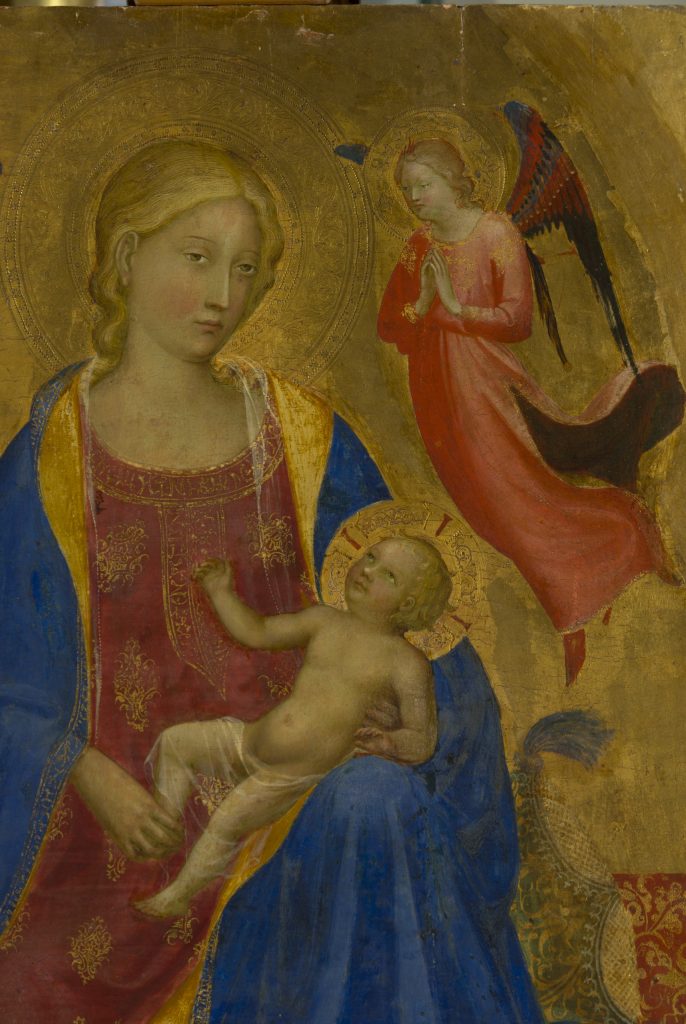
Figure 5. Detail of Fra Angelico, Madonna dell’Umiltà, ca. 1415–19. Mixed media with gold on panel, 81 × 51 cm. Hermitage Museum, St. Petersburg (4115).
Fra Angelico covers the precious gold leaf with layers of red paint. This superimposition of red hue creates ambiguity: Although the red paint forefronts the gold leaf by outlining the pattern of the cloth, the eyes observe gold leaf applications running from the very top of the panel throughout the bottom edge as a base or background. The calyxes, birds, vines, spirals, and star-shaped ornaments appear as golden figures on a crimson ground, instead of the other way around. Thick coats of luster paint produce an opaque red that covers the precious gold to provide a new pictorial ground—an observation I will return to.
Just a few years after his Madonna dell’Umiltà, Fra Angelico created his Virgin and Child from The Alana Collection between the years of 1420 and 1422 (fig. 2).[4] Mary is dressed in a golden halo, a red garment, and a dark blue cloak. The Christ child sits on the Virgin’s left knee held by her left hand. The plane is dominated by shades of gold, red, and blue, and split horizontally into two sections: The upper half of the panel’s polished gold leaf is left unadorned, while the floor under the Madonna shines in opaque, brilliant red. Also, Mary is seated in a Savonarola chair with lions’ heads and paws rather tab on a modest silk pillow. Between the upper gold ground and the lower red ground, countless delicate lines, punched dots, and a thin layer of red glazing luster paint contour a cloth of honor dressing the chair in the back behind the Madonna.
Placing planes
Fra Angelico’s Virgin and Child from The Alana Collection is not considered to be an example for the iconography of the Madonna of Humility.[5] In his seminal essay from 1936, Millard Meiss speculative idea of a “lost prototype”[6] as the earliest example of the iconography of the Madonna of Humility resulted in a simple but surprisingly effective definition: The Madonna of Humility is defined by “the single fact that she was seated on the ground.”[7]
Why, one must wonder, is precisely the ground—a term that can also mean “earth,” “background,” or “primer,”[8]—a distinguishing feature of the iconography? Isidor of Seville provides a justification for the significance of the ground beneath the Madonna dell’Umiltà: “Humilis, quasi humo acclinis.”[9] Hence, the term humilitas can be etymologically derived from humus,[10] which translates to “soil,” “earth,” or “field.” In the Italian and Latin term campo (which conveys all connotations of the Latin “humus”), in turn, we find the words campeggiare (“fielding,” calling to mind the English “camping”) and campire, by which the act of “fielding” or “coloring” a panel or canvas is described.[11] Even the Greek word ταπεινός (humble) already contains the root πατέω, “walk,” “tread on,” and “trample on.”[12] The concept of the “humility” is thus solidly rooted in “ground.”
However, even more significant for the painter and Dominican monk Fra Angelico must have been the fact that humility as a virtue and corporeal expression occupied a central position within daily monastic life rather that the fact that the great Dominican scholar Thomas Aquinas himself discussed the etymological relation between humus and humilitas.[13] In bowing, kneeling, and prostration, Dominican servants lowered themselves to the ground to express their devotion and humbleness.
When Millard Meiss alludes to the ground, he refers to the “floor or ground plane under the Madonna.”[14] Meiss is not referring to the primer, gesso, or bole, nor to the background or the gold ground. He is referencing the floor or ground as a depicted place within the pictorial space of the image. According to Meiss, the etymological relationship between the words humilitas and humus allows for the possibility of concisely identifying and determining iconographical types and prototypes. However, I will argue that in Fra Angelico’s portrayal of Marian humility, the humus rather than the “floor or ground plane under the Madonna” becomes the very subject. For Fra Angelico, it is the ground as a field or campo held together by gold leaf and red pigments, that becomes the foundation for depicting humilitas.
Brilliant fabrics
The grounds’ gold leaf and red colors in Fra Angelico’s Madonna dell’Umiltà evoke a luxurious textile. Contradictory, the humble Virgin is, therefore, not only set in gold but also surrounded by precious fabrics. This paradox can be dissolved by contextualizing the virtue of humility theologically: “Like a valuable precious stone in gold, humility is the jewel of all virtues,” writes, for example, the Carthusian monk Nikolaus Kempf in the mid-fourteenth century in his Expositiones Mysticae in Cantica Canticorum.[15] In comparison, Augustine and the Dominican Thomas Aquinas explicitly regard humility as the root of all virtues: Only on the foundation of humilitas (humility) could virtues like caritas (charity) and pietas (piety) flourish.[16] Thus it comes as no surprise that Angelico used gold leaf as the foundation for his figuration of the Madonna of Humility.[17]
The Madonna dell’Umiltà’s gold-and-red fabric has no discernible pattern repeat.[18] While navigating the all-over, the eye only gradually discovers seven variations of an exotic bird amid calyxes and vines. Three of them can be found on the right side of the pictorial field, two of them can be seen in the center with their wings extended, a sixth is partially hidden by the gold vase on the bottom edge, and the feathers of a seventh bird are concealed between the two wings of the angel performing music on the left.
Although the vegetative design, the exotic birds, and the red and gold colors of the weave would permit distant comparisons to Central Asian fabrics, the red-and-gold textile of the Madonna dell’Umiltà from the Hermitage cannot be identified based on its aesthetic characteristics: No fabric produced on a loom could have such free and endlessly variable embellishments as the cloth in Fra Angelico’s Madonna dell’Umiltà. Moreover, from the panel painting itself, it is impossible to determine whether the fabric would depict a brocade weft or a silk with a weft lancé. On the Italian peninsula in the fifteenth century, gold threads in silks were introduced as brocade wefts and hence did not traverse the entire fabric’s back. The gold thread in these textiles, like in tapestry, corresponds only to the width of a particular element within the overall pattern rather than running from selvage to selvage (from one rim of the fabric to the opposite end). Gold threads wouldn’t be covered by red silk just to be invisible.
As a parallel to the technique of putting down gold leaf on a panel, one would have to imagine a fabric in which the gold thread runs on the back of the cloth and remains, much like in the panel painting, partially unseen. A convincing analogy between a weaving technique and the technique used by Fra Angelico would only exist if the gold thread could be stretched on the loom as the warp. Yet, there is no evidence of a red and gold lampas of that kind in the history of textiles. Ironically, gold threads are too frail to be spread out as a “gold ground.”[19] Only in painting can precious metal serve as the foundation for the representation of the virtue of humility.
To model the gold cloth of honor of the Madonna dell’Umiltà now in Turin (fig. 6), Fra Angelico used a blunt needle to trace a pattern. Nothing but light falling on the hatched tracings makes the imaginative weave on the surface of the gold leaf visible. Strictly arranged in a ninety-degree angle, the pattern is seen either as bright figures on a dark ground or as dark figures on a luminous ground (figs. 7 and 8). On a technical level, Fra Angelico’s way of tooling the gold leaf recalls damasks, which are patterned textiles that most remarkably use one single kind of thread in just one color to alternate warp-faced and weft-faced elements in their patterns. Depending on the lighting, a damask’s pattern repeat appears either as a brilliant pattern on a dark ground or as a shaded pattern on a luminous ground. Yet, Fra Angelico’s envisioned gold damask remains a fiction that materializes only on the surface of the picture plane, for no damask can be created with threads spun from gold.
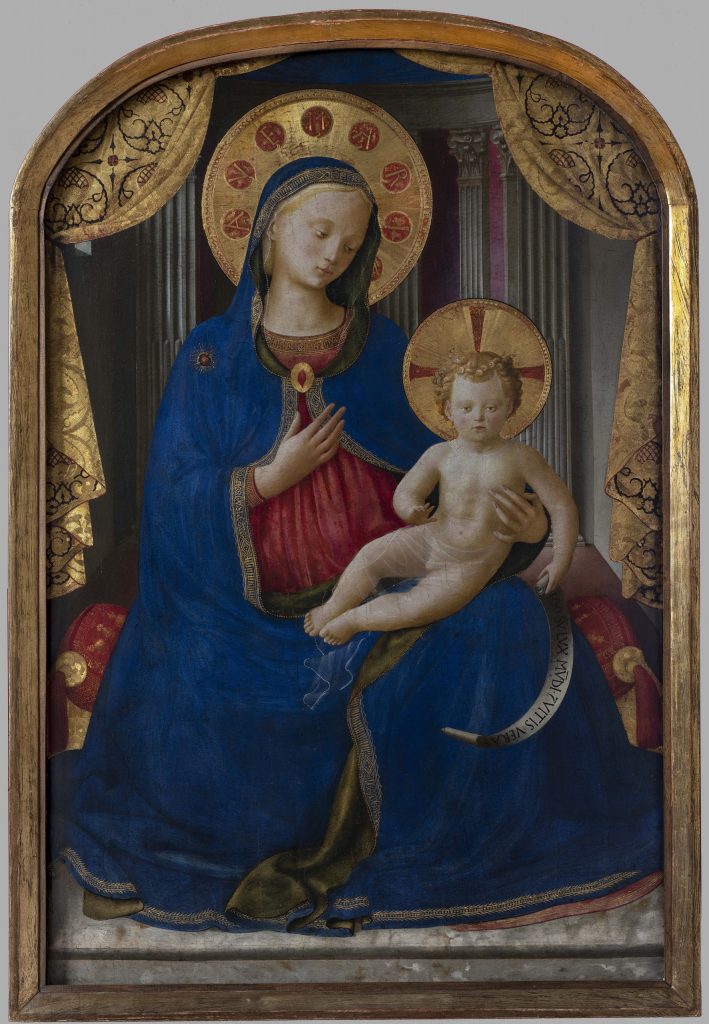
Figure 6. Fra Angelico, Madonna dell’Umiltà, ca. 1445. Mixed media with gold on panel, 71.5 × 105 cm. Galleria Sabauda, Turin.
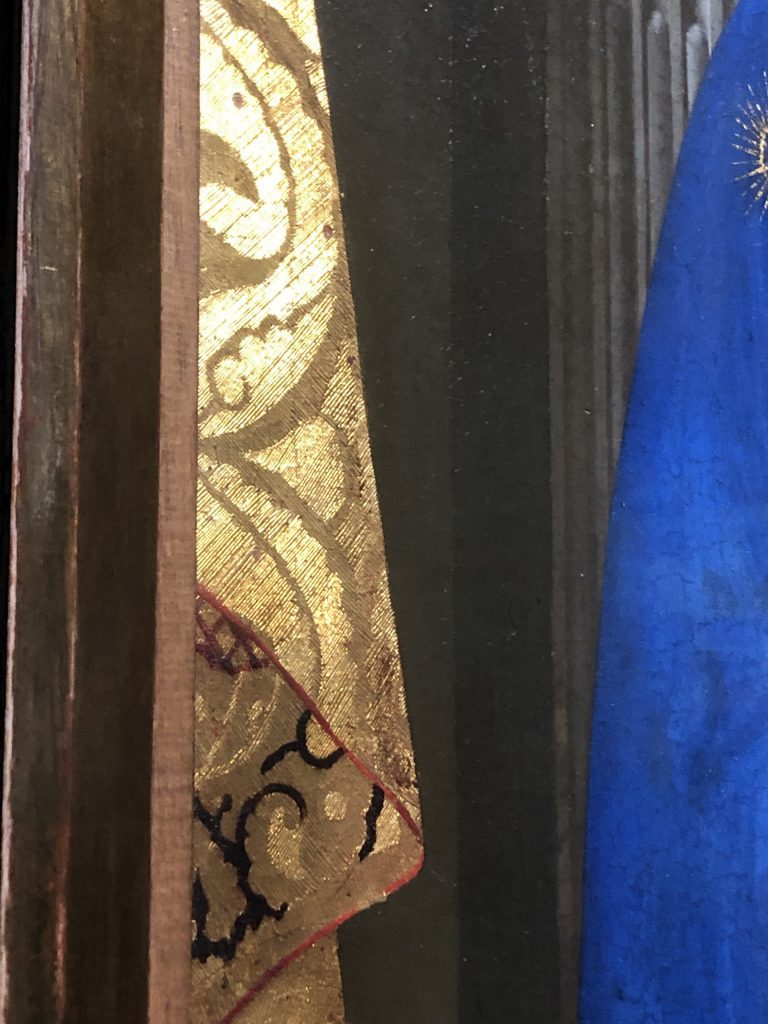
Figure 7. Detail of Fra Angelico, Madonna dell’Umiltà, ca. 1445. Mixed media with gold on panel, 71.5 × 105 cm. Photo: author.

Figure 8. Detail of Fra Angelico, Madonna dell’Umiltà, ca. 1445. Mixed media with gold on panel, 71.5 × 105 cm. Photo: author.
While colleagues like Gentile da Fabriano had already mimicked the splendor of real fabrics, one can only draw the conclusion that Fra Angelico did not wish to depict a fabric that could directly correspond to a known textile.[20] Yet, Fra Angelico’s inventiveness rested on his aptitude for careful observation and his knowledge of weaving techniques, which allowed him to push them past their boundaries in his paintings. His penchant for experimenting with his own painting techniques and materials drove him to bold fictions of materials, as is certainly also true for his shimmering-silky red-and-gold-cloth adorning the Savonarola chair in his Virgin and Child from The Alana Collection.
Leveling layers
But why then would Fra Angelico depict gold-and-red-textiles exceeding the splendor of the finest silks in Florence? To answer this question, it is necessary to distinguish between the formal, iconographical, and theological functions of the represented textiles.
Suppose we understand the gold ground in Angelico’s Virgin and Child from The Alana Collection as serving the formal function of the campo while the opaque red—in this case—marks the floor, the question arises of how the cloth of honor behind Mary fits into this structure. On the one hand, the lively texture of the tooled gold creating the drappo d’oro becomes a three-dimensionally perceptible object within the pictorial space.[21] On the other hand, the glazed gold refracts and reflects the incoming light while taking on the formal function of a gold plane. Therefore, the golden cloth of honor is revealed to be neither a purely self-referential assertion of material nor an object that can be clearly concretized within the depicted space. Its unstable ambiguity lies between the picture plane and the pictorial space, and, therefore, between figures, grounds, and gold.
The golden cloth of honor is revealed neither as a ground nor as a figure, but as both at the same time. The dual formal function of the fabric can be theorized using Edgar Rubin’s example of a Face-as-Vase, which I shall return to later, or Richard Wollheim’s vocabulary of “seeing-in” and his concept of “twofoldness.”[22] On the other hand, Fra Angelico extends the formal “twofoldness” of his cloth into the hypostatic union of Christ himself. As both fully man and fully God, the cloths’ status as both figure and ground becomes the ὑπόστασις (hypostasis), the “foundation,” “substance,” or “subsistence” of the panel painting. Angelico’s representation of Marian humility through his fabric is, in fact, Christological.
Through the depiction of the gold-and-red cloth, countless lines and dots bear light onto the surface, evoking the incarnating Christ as the “light of the world” (John 8:12).[23] The depiction of the subject of the Incarnation as a moment of illumination comes to life in the golden refracting and reflecting light and in the transparent red luster paint that creates the cloth on the panel’s surface. These two elements, red and gold, appear again as a contrast between the gold ground and the red floor, Mary’s bright red garment and the naked, almost golden body of Christ, in Christ’s red-and-gold nimbus, and emphasized by the red grapes in Mary’s right hand, for which the Child is reaching. The red pigment matter is, quite literally, not only referring to Christ’s Passion, but also to Mary’s prima materia, her blood from which the body of Christ is created.[24] Her red garment, which provides a new ground to the Child on her lap,[25] is once again revealed neither as a figure nor as a ground—but as both at once.
Fra Angelico’s invitation to contemplate on the matter of “ground” reaches the viewer through his skilled layering of materials and through his innovative and subtle iconography, subversively reaching new heights while unfolding figures, grounds, and gold grounds.
Handling gold leaf
Techniques for working gold leaf, such as punching, granulation or stippling, chasing, engraving, and tracing, or pastiglia, sgraffito, and mordant gilding techniques were not invented in the Quattrocento.[26] Jaroslav Folda and Mojmír Frinta have shown how the chrysographic techniques used in Byzantine icons—which rely in turn on Roman models—can be seen in Italian panel paintings from the thirteenth century. Especially lavish ornaments, as well as decorated nimbi and fields of polished gold leaf, were created in Florence in the fourteenth century. On the other hand, punching techniques and heightening with pastiglia persisted throughout the sixteenth century, especially in Siena and northern Italy.
Few of the panel paintings by Fra Angelico use pastiglia to heighten the surface; instead they feature even more refined sgraffito and mordant gilding techniques. Moreover, Angelico utilized shell gold and silver leaf, added delicate particles of silicon glitter to the plaster of his frescoes, and used transparent luster paints, which he applied directly to the gold leaf. For instance, Fra Angelico uses a thin but blunt wooden needle to define the finest vines, spirals, and birds’ feathers in addition to painting red over gold leaf. In scratching off the red paint, even more gleaming gold can be exposed.[27] By contrast, mordant gilding refers to a technique in which a thin brush is used to apply a size to the dry layer of paint.[28] Only the areas where the sizing was previously placed are where the gold leaf adheres. As soon as the size has dried, the excess gold leaf is removed with a feather. In this case, burnishing the applied gold leaf is usually neither possible nor desirable.
While mordant gilding techniques were used to render the divine illumination of the Hodegretia, sgraffito techniques were preferred in the West. While Cennini notes that mordant gilding is not a very frugal method, since the tiny flakes of gold leaf that do not stick to the size can only be processed into shell gold or used for the smallest of corrections, it is surprising that he makes no mention of the significant amount of gold that remains hidden, invisible beneath the paint when applying sgraffito techniques.[29]
As we have seen, the representation of the Madonna of Humility encourages creative ways to layer materials. In Fra Angelico’s Madonna dell’Umiltà from the Hermitage, large parts of the golden surface remain disguised from the viewer’s gaze. Contemplating the “ground” as the foundation of humility, Fra Angelico foregrounds complexity: Planes became levels that superimpose new layers, emphasizing gold at its foundation. When it comes to Fra Angelico and his depictions of the humble Madonna, the question, therefore, is not anymore, how precious gold can be suitable to represent humility, but if gold leaf is a necessary feature to figurate the Madonna of Humility.
Alberti’s appeal
The traditional narrative of the supposed disappearance of gold leaf over the course of the Quattrocento often begins with Leon Battista Alberti. In chapter 49 of De Pictura and Della Pittura,[30] he calls for the gleam of gold to be evoked not by applying gold leaf but by employing paint:[31]
In fact, as the admiration and greater praise of an artist is based on colors, thus also one can observe that, after you have placed gold on a flat panel, the major parts of [those] surfaces that one needed to represent as bright and brilliant appear dark to the observers; and others [surfaces], perhaps, which should be darker, result more luminous.[32]
Contrary to the reception of this oft-cited passage as proof for the regression of gold leaf in Italian panel painting, Alberti never mentions the campo d’oro, or gold ground. Moreover, Ceninno Cennini noted in his Libro dell’arte three decades earlier that gold could appear not only brightly lit but also dark and shaded. Alberti’s concern thus seems to have been something different.
In section 48, Alberti first explains the arrangements of genres of color using an example:
Grace, without doubt, will result when colors will be combined with colors with a certain accurate diligence, as, for example, if you paint Diana while she leads choruses, it is convenient that green clothes are assigned to this nymph, to that next one white, to this one who precedes, purple, to [the other] who follows, yellow. And one after another, let them be dressed, indeed, according to a variety of such colors, that bright colors always match with some dark colors of a different kind.[33]
A few lines later, in section 49, it is not the garments of Diana’s nymphs that he cites as an argument against gold leaf but rather Dido’s accessories:
But, there are those who utilize gold in a disproportionate way because they think that gold lends a certain majesty to the historia. I do not approve of them at all. Indeed, if I would like to paint Virgil’s Dido with a golden quiver, [who] kept [her] hair in a knot with a golden clasp, [for] whom a golden band girded [her] dress, and who rode with golden reins, and, in general, all things shone because of the gold, I [would] strive, nevertheless, to imitate by means of colors rather than by means of gold that abundance of golden rays that strikes observers’ eyes from every part.[34]
Regrettably, we cannot recreate the painting of Dido Alberti might have had in front of his eyes. However, his specific example clarifies that the flat gold ground cannot be referred to here. Alberti describes a gold quiver, a gold hairband, reins, and golden rays emanating. He is, therefore, referring to mordant gilding, not to the application of multiple gold leaves covering a larger surface.
Rereading the passage from Alberti’s treatise brings forth another reason to question his scepsis towards the use of gold leaf in devotional panel painting: Alberti is referring to a painting with a mythological theme, while Fra Angelico employs gold leaf not only very differently but pursues, as we have seen, a Christological argument. In doing so, Angelico productively recognizes the phenomenon described by Cennini and Alberti of gold appearing either dull or shiny and employs it enthusiastically, as in the gold “damask” for his Madonna of Humility today in Turin and, of course, in the cloth of honor for his panel from The Alana Collection. Fra Angelico recognizes that light changes the color of gold and includes both colors in his palette.
Between figure and ground
The English terms figure, field, ground, background, or the semantically convoluted term plane cannot adequately translate the terms figura and campo, piano and fondo or sfondo.[35] While the panel paintings themselves demand new concepts to comprehend what can be seen between figures and grounds, observations of the Danish psychologist Edgar Rubin can help grasp the painter’s visual strategies.
In his dissertation Synsoplevede Figurer: Studier i psykologisk Analyse, Edgar Rubin (1886–1951) searches for “fundamental differences” between “figure” and “ground.” Rubin first states that “what is perceived as figure and what is perceived as ground do not have shape in the same way,”[36] but then observes:
In several cases in which the change from seeing an area as ground to seeing it as figure occurred rather slowly, I experienced how the ground gradually took on a certain shape and became figure. […] Something happens to the ground when it goes over into figure. Especially when it proceeds slowly, it seems that there is something new added to the area which was ground and is becoming figure. The experienced object becomes enriched while changing. This impression is also clear when the reversal of figure and ground occurs suddenly.[37]
In contrast to Joseph Jastrow’s ambiguous image of the duck-rabbit head made famous by Ludwig Wittgenstein,[38] Rubin’s work focuses more on the possibility of perceiving forms as figures or as grounds than it does on the dual figure formed by a line (fig. 9). While the terms “figure” and “ground” became fundamental to art critique and art historical scholarship over the course of the twentieth century, this perceptive possibility of seeing figures as grounds and grounds as figures had almost gone forgotten.[39]

Figure 9. Edgar Rubin, Fig. 3, in: Edgar Rubin, Visuell wahrgenommene Figuren. Studien in psychologischer Analyse, 1. Teil, Copenhagen et al. 1921, unpag.
Edgar Rubin’s vivid description of the possibility of perceptive shifts between figure and ground is what prompts us to revisit Fra Angelico’s gold-and-red textiles once again. Between figures, grounds, and gold, Angelico utilizes planar and spatial layers that develop into layers of meaning, challenging the stability of the viewer’s perception in time. In the Madonna dell’Umiltà from the Hermitage, Mary is lowering her gaze while kept grounded (fig. 10), shifting between becoming a figure or remaining a ground.[40] Within the pictorial space, the ridge of the red-and-gold textile that runs through the center of the image becomes a distant, promising horizon: “Quia respexit humilitatem ancillae suae; ecce enim ex hoc beatam me dicent omnes generationes.” (Luke 1:48).[41] In order to facilitate contemplative reflections on the virtue of humility, Mary nevertheless takes the center stage and transforms into the figure of all figures between planes and pigments.
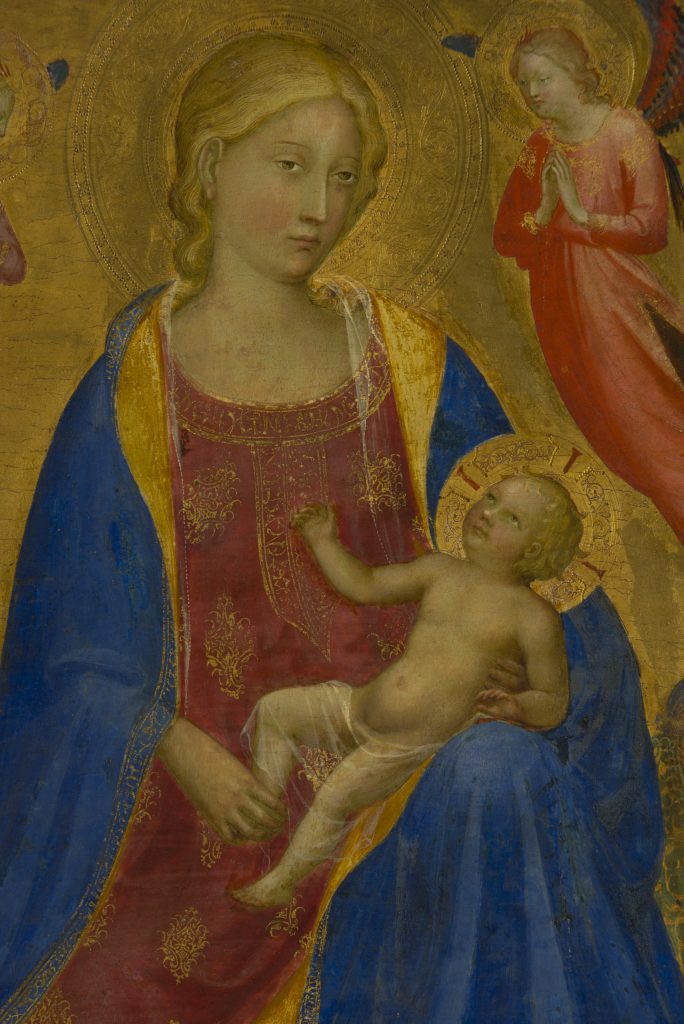
Figure 10. Detail of Fra Angelico, Madonna dell’Umiltà, ca. 1415–19. Mixed media with gold on panel, 81 × 51 cm. Hermitage Museum, St. Petersburg (4115).
For Millard Meiss and others, Angelico’s Virgin from The Alana Collection would never be a Madonna dell’Umiltà since she is, by all means, seated on a luxurious Savonarola chair rather than sitting on the ground. However, here more than in any other panel painting by Fra Angelico, the “ground” becomes the very subject of his painting. In the temporal movement of perception, the golden cloth of honor is exposed neither as a ground nor as a figure, but as both simultaneously. Angelico strives to renegotiate the relationship between paint and gold and, therefore, between figures, ground, and gold, inviting contemplation on humilitas and humus; mother, matter, and material.[42]
What has been at stake is the question of how Fra Angelico’s Madonne relate to humility and virtue, splendor, and gold at a moment in history when new representational strategies set out to shift the perception and reception of devotional panel painting. Engaging in these debates at a very early stage in his career, Angelico places the blue tip of one of his angel’s wings just millimeters in front of the Virgin’s nimbus, allowing the figure to unfold spatially into the viewer’s realm (fig. 11). In exploring his possibilities, Fra Angelico contributes to these artistic transitions in the first decades of the Quattrocento by relocating the Madonna of Humility within the pictorial space and on the picture plane. In focusing on the grounds surrounding her, he applied layers over layers and challenged the most sumptuous material of all, that is, gold.
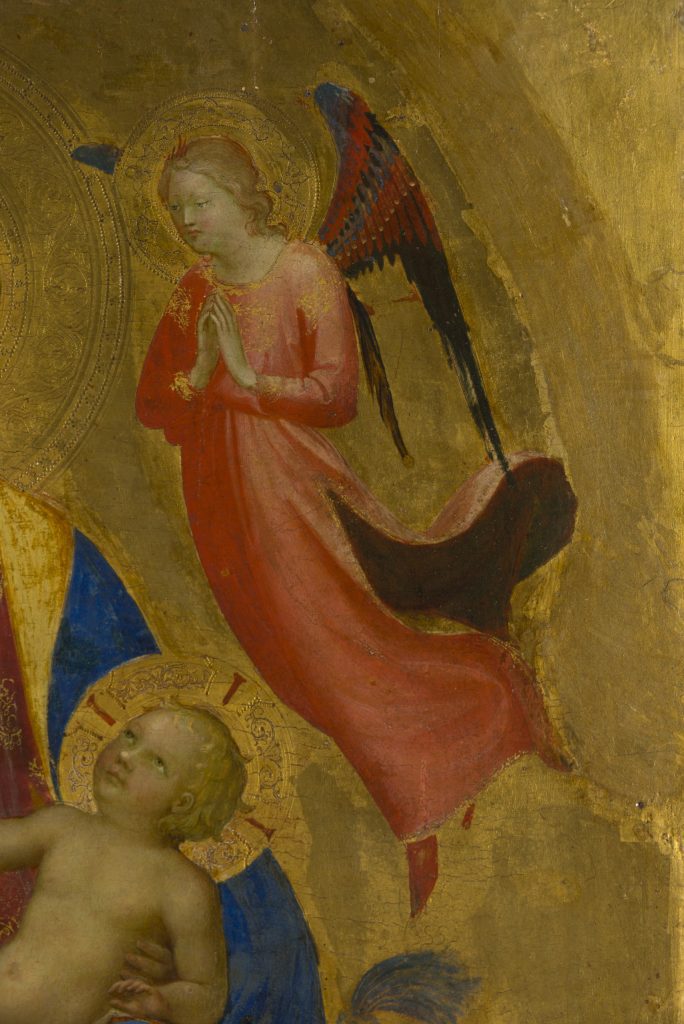
Figure 11. Detail of Fra Angelico, Madonna dell’Umiltà, ca. 1415–19. Mixed media with gold on panel, 81 × 51 cm. Hermitage Museum, St. Petersburg (4115).
References
| ↑1 | I am grateful for inspiring conversations and helpful feedback from Beate Fricke, Niklaus Largier, Meekyung MacMurdie, and Corinne Mühlemann. I am thanking my two anonymous reviewers for their encouragement and Benjamin C. Tilghman and Rachel Dressler for their constructive support. |
|---|---|
| ↑2 | The panel’s original frame was removed, and the present frame (fig. 3) dates from the mid-nineteenth century. On the upper edge the pointed termination of the panel was cut down straight. |
| ↑3 | The writer Christoph Martin Wieland (1733–1813) appears to have been one of the first to argue for differentiating between Umriss (outline) and Kontur (contour): “The word Kontur (contour, conturno) seems to belong to those foreign art words that one otherwise, for lack of a synonymous [German] word, would have had to paraphrase. For Kontur and Umriss are by no means synonymous. Umriss simply means what the sense of vision perceives of the form of a body; Kontur, by contrast, actually means the idea we obtain of a physical form mediated by feeling and touching. It is a mere illusion—not of our senses but of our hasty judgment when we believe we see the Kontur of a body (e.g., of the spheres spoken of here). Before we have sensed it by touch, we have only a very flawed idea of its form […].” Wieland 1769, transl. from Kurbjuhn, Charlotte: Kontur. Geschichte einer ästhetischen Denkfigur (Quellen und Forschungen zur Literatur- und Kulturgeschichte), Berlin et al.: De Gruyter, 2014, 3. |
| ↑4 | The panel has been part of The Barbara Piasecka Johnson Collection at least until 2005: cf. Kanter, Laurence & Palladino, Pia, ed. Fra Angelico, New Haven/London: Yale University Press, 2005. Published following the exhibition Fra Angelico at The Metropolitan Museum of Art New York, New York, 72; Spike, John T.: Fra Angelico, New York : Abbeville Press, 1996 (cat. no. 97); Grabski, Józef: Opus sacrum: wystawa ze zbiorów Barbary Piaseckiej-Johnson. Katalog, Warsaw: IRSA, 1990. The panel is not included in Boskovits, Miklós, ed. The Alana collection. Vol. I – Italian paintings from the 13th to 15th century. Florence: Polistampa, 2009. |
| ↑5 | See for extensive discussions on the iconography of the Madonna of Humility: Meiss, Millard. “The Madonna of Humility. “The Art Bulletin 18, nr. 4 (1936), 435–465. https://doi.org/10.2307/3045649; van Os, Henk. Marias Demut und Verherrlichung in der sienesischen Malerei 1300–1450, Den Haag: Staatsuitgeverij, 1969; Polzer, Joseph. “Concerning the Origin of the Virgin of Humility Theme. “Racar 27 (2000), 1–31. https://doi.org/10.7202/1069720ar; Williamson, Beth A. The Madonna of Humility. Development, Dissemination, and Reception, c. 1340–1400 (Bristol Studies in Medieval Culture), Woodbridge: Boydell Press, 2009. |
| ↑6 | Meiss 1936, 436 and 437. |
| ↑7 | Meiss 1936, 452 n. 2. |
| ↑8 | See on the terminology of “ground” Stumpel, Jeroen. „On Grounds and Backgrounds: Some Remarks about Composition in Renaissance Painting”, in: Simiolus: Netherlandish Quarterly for the History of Art, 18, 219–43; Puttfarken, Thomas. The Discovery of Pictorial Composition: Theories of Visual Order in Painting, 1400–1800, New Haven CT 2000; Boehm, Gottfried, and Burioni, Matteo, ed. Der Grund. Das Feld des Sichtbaren. München and Paderborn: Wilhelm Fink, 2012. |
| ↑9 | “Humble (humilis), as if inclined to the ground (humus).” Lindsay, Wallace Martin, ed. Isidori Hispalensis. Episcopi Etymologiarum sive Originum libri XX, Oxford: Oxford University Press, 1911, book 10, sec. 115. |
| ↑10 | For additional evidence, see Baumann, Notker. Die Demut als Grundlage aller Tugenden bei Augustinus, Frankfurt am Main et al.: Lang, 2009, 16. |
| ↑11 | See Burioni, Matteo. “Grund und campo. Die Metaphorik des Bildgrundes in der frühen Neuzeit oder: Paolo Uccellos Schlacht von San Romano.“ In Der Grund. Das Feld des Sichtbaren, edited by Gottfried Boehm and Matteo Burioni, 95–149, München and Paderborn: Wilhelm Fink, 2012, 98; Peselmann, Veronica. Der Grund der Malerei. Materialität im Prozess bei Corot und Courbet, Berlin: Reimer, 2020. https://doi.org/10.30965/9783846750742_004 |
| ↑12 | See entry in Liddell, Henry George and Robert Scott, ed. A Greek–English Lexicon. Oxford: Clarendon Press, 1940. To add even more layers of “Begriffsgeschichte,” the German word “Demut” (humility) can be traced back to the Old High German adjective diomuoti, which means “subservient” and is composed of dio, “servant,” and muot, “courage,” or “mentality.” (Baumann 2009, 16–17. |
| ↑13 | “Ad primum ergo dicendum quod, sicut Isidorus dicit, in libro Etymol., humilis dicitur quasi humi acclinis, idest, imis inhaerens.” (Summa Theologica, IIa–IIae, q. 161 a. 1 ad 1. |
| ↑14 | Meiss 1936, 449. |
| ↑15 | “Surge, id est, sursum te erige adhuc altius, amica mea per perfectam charitatem; speciosa mea per veram descretionem, quae omnino omnibus virtutibus dat speciem, & eas conservat in debito medio. Aut speciosa mea per veram humilitatem, quae omnes virtutes ornat, sicut lapides preciosi ornant aurum.” Pez, Bernhard, ed. Bibliotheca Ascetica. Antiquo – Nova. Tomi IX–XII, Regensburg 1726–40, Westmead: Gregg Press, 1967 (Lib. II, Cap. XVII, 343.) See Meier, Christel, and Suntrup, Rudolf. Lexikon der Farbenbedeutungen im Mittelalter. 1. Teil. Historische und systematische Grundzüge der Farbendeutung. 2. Teil. Lexikon der allegorischen Farbendeutung (Pictura et poesis 30), Köln: Böhlau, 2011, 180. |
| ↑16 | Humilitas (humility) is for Augustine the “maxima disciplina christiana,” and the most important foundation of the faith. Humility is thus ontologically prior to the other virtues: see Baumann 2009, esp. 14 and 192. Thomas Aquinas writes: “Just as the orderly assembly of virtues is, by reason of a certain likeness, compared to a building, so again that which is the first step in the acquisition of virtue is likened to the foundation, which is first laid before the rest of the building. Now the virtues are in truth infused by God. Wherefore the first step in the acquisition of virtue may be understood in two ways. First by way of removing obstacles: and thus humility holds the first place, inasmuch as it expels pride, which “God resists,” and makes man submissive and ever open to receive the influx of Divine grace. In this sense humility is said to be the foundation of the spiritual edifice” (Summa Theologica II–II, q. 161.5. ad 2), as cited in Boyd, Craig A. “Pride and Humility: Tempering the Desire for Excellence. “In Virtues and Their Vices, edited by Kevin Timpe and Craig A. Boyd. Oxford: Oxford University Press, 2014, 263. |
| ↑17 | On the rich history of the concepts of “figuration” and “figuring” in the present context, see Auerbach, Erich. „Mimesis und Figura.“ In Mimesis und Figura. Mit einer Neuausgabe des Figura-Aufsatzes von Erich Auerbach, edited by Friedrich Balke and Hanna Engelmeier, Paderborn: Wilhelm Fink, 2016 and Didi-Huberman, Georges. Fra Angelico. Dissemblance et Figuration, Paris: Flammarion, 1990. |
| ↑18 | A note on terminology: In his monograph Gold Brocade and Renaissance Painting: A Study in Material Culture, Rembrandt Duits understands “brocade” to refer to a fabric with gold threads and cites Lomazzo, whose Trattato dell’Arte of 1584 marked the first time in which silk fabric with gold threads were classified under the term brocati (Duits, Rembrandt. Gold Brocade and Renaissance Painting. A Study in Material Culture, London: Pindar Press, 2008, 31). However, “gold brocade” discussed as “gold-and-silk fabric” remains an established term also in research concerned with panel painting depicting these textiles long before the term could have become a standard in the 16th century. In his Libro dell’Arte, Cennino Cennini uses the term drappo d’oro for painted gold-and-silk fabrics. Moreover, the Centre international d’étude des textiles anciens (CIETA) advises against the use of the term “gold brocade” in scholarly contexts because it neither describes a specific weave nor a specific weaving technique (see Borkopp-Restle, Birgitt. „Brokat.“ In Vokabular der Textiltechniken. Deutsch. Mit den Entsprechungen im Englischen, Französischen, Italienischen, Portugiesischen, Spanischen, Schwedischen, edited by Birgitt Borkopp-Restle, Lyon: Centre International d’Étude de Textiles Anciens, 2018. https://cieta.fr/wp-content/uploads/2018/09/vokabular_deutsch_2018-1.pdf.). For these reasons, I also refrain from using the term “brocade.” |
| ↑19 | This is also true of gilded copper and silver threads with no fiber core; for threads of gilded parchment, leather, or gut membranes; and for threads with a core of silk, linen, or cotton wrapped with a gilded intestinal membrane or gilded silver (see Monnas, Lisa. Merchants, Princes, and Painters. Silk Fabrics in Italian and Northern Paintings, 1300–1500, New Haven and London: Yale University Press, 2008, 299–300). Like the bole of a panel painting, the core of wrapped gold threads was often dyed. The colors of the treated silk, linen, or cotton fibers under gilding varied from yellow by way of ocher to red. A core of silk or linen dyed saffron-yellow could scarcely be surpassed on the scale of luxury for gold threads. The gold leaf used to produce gold threads was obtained from the battilori, the gold beaters by the tiralori (cf. Dini, Bruno: „Una Manifattura di Battiloro nel Quattrocento.“ In Tecnica a Società dei Secoli XII–XVI. Atti dell’XI Convegno Internazionale die Studi, Pistoia, 28–31 Ottobre 1984 (Convegno Internazionale di Studi Centro Italiano di Studi di Storia e d’Arte 11), 83–111, Pistoia 1987, 87). |
| ↑20 | Lisa Monnas and Rembrandt Duits both conclude that comparisons with surviving gold-and-silk fabrics show first and foremost that the textiles put on display by painters are far more opulent and precious than most fabrics ever could be: Monnas 2008, 156, and Duits 2008, 31. On Florentine textiles of the fourteenth century and their depiction in paintings, see Hollberg, Cecilie, ed. Textiles and Wealth in 14th Century Florence. Wool, Silk, Painting. Firenze: Giunti, 2017. Published following the exhibition Essuto e ricchezza a Firenze nel Trecento: lana, seta, pittura at the Galleria dell’Academia di Firenze, Firenze. |
| ↑21 | See for more examples in this direction, esp. from northern Europe: Blümle, Claudia. „Glitzernde Falten. Goldgrund Vorhang in der frühneuzeitlichen Malerei.“ In Szenen des Vorhangs. Schnittflächen der Künste, edited by Gabriele Brandstetter and Sibylle Peters, 45–66, Freiburg i. Br. et al.: Rombach, 2008. |
| ↑22 | See Wollheim, Richard. “Seeing-as, Seeing-in, and Pictorial Representation. “In Art and Its Objects. With Six Supplementary Essays, Cambridge: Cambridge University Press, 1980, 137–151; Wollheim, Richard: “On Pictorial Representation. “The Journal of Aesthetics and Art Criticism 56, nr. 3 (1998), 217–226. https://doi.org/10.1111/1540_6245.jaac56.3.0217; Nanay, Bence. “Perceiving Pictures. “Phenomenology and the Cognitive Sciences 10, nr. 4 (2011), 461–480. https://doi.org/10.1007/s11097-011-9219-x; Alloa, Emmanuel. “Seeing-as, seeing-in, seeing-with. Looking through pictures. “In The Palgrave Handbook of Image Studies, edited by Krešimir Pungar, 483–499. Basingstoke: Palgrave Macmillan, 2021. https://doi.org/10.1007/978-3-030-71830-5_29 |
| ↑23 | Although it is tempting, I wouldn’t go so far as to link Angelico’s depiction of the cloth to the curtain described in the ninth chapter of the Epistle to the Hebrews, in which the textile can be read as an identification with Christ’s flesh: “by the new and living way that he opened for us through the curtain, that is, through his flesh” (Hebr. 10:20). |
| ↑24 | “Mater dicitur, quod exinde efficiatur aliquid. Mater enim quasi materia; nam causa pater est.” Transl. “A mother is so named because something is made from her, for the term ‘mother’ (mater) is as if the word were ‘matter’ (materia), but the father is the cause.“ Isidore, Etymologiarum, book 9, chap. 5, sec. 6. See, for example on ideas of conception in the Middle Ages and blood as matter: Miteva, Evelina. „Iam ergo patet veritas eius quod dixit Aristoteles, et causa deceptionis Galieni. Philosophers vs. Medics in Albertus Magnus’ Account on Conception.“ Speer, Andreas, and Mauriège, Maxime, ed. Irrtum – Error – Erreur, Berlin and Boston: De Gruyter (2018), 107–122. https://doi.org/10.1515/9783110592191-010 |
| ↑25 | On heraldic rules of layering metals and colors in Italian panel painting, see Haas, Bruno: Die ikonischen Situationen, Paderborn: Wilhelm Fink, 2015. |
| ↑26 | See Frinta, Mojmír S.: “Raised Gilded Adornment of the Cypriot Icons, and the Occurrence of the Technique in the West. “Gesta 20, 8 (1981): 333–347; Skaug, Erling. Punch Marks from Giotto to Fra Angelico. Attribution, Chronology, and Workshop Relationships in Tuscan Panel Painting. With Particular Consideration to Florence, c.1330–1430. Volume I and II, Oslo: IIC-Nordic Group, 1994; Frinta, Mojmír S.: Punched Decoration on Late Medieval Panel and Miniature Painting. Part I. Catalogue Raisonné of all Punch Shapes, Prague: Maxdorf, 1998; Muller, Norman. “In a New Light. The Origins of Reflective Halo Tooling in Siena. “ Zeitschrift für Kunstgeschichte 75, nr. 2 (2012), 153–178; Folda, Jaroslav. Byzantine Art and Italian Panel Painting: The Virgin and Child Hodegetria and the Art of Chrysography. New York: Cambridge University Press, 2015. It should be noted here again that neither Simone Martini nor Duccio di Buoninsegna can be credited with inventing these techniques. |
| ↑27 | From the Italian (s)graffiare, “to scratch,” and ultimately the Greek γράφειν (gráphein), “to write.” “Chrysography” is from the Greek χρυσός (khrusós), “gold,” and γράφειν (gráphein). On the technique, see Cennini, Cennino. Il libro dell’arte. Translated by Lara Broecke. London: Archetype, 2015, 178. |
| ↑28 | Cennini speaks of mordenti as mordants, i.e., mordant gilding. Cf. Cennini trans. Broecke 2015, 138. |
| ↑29 | Cennino Cennini merely proposes punching the areas of unpainted gold—that is, either the campo (ground) or the lacci (motifs)—afterward. |
| ↑30 | Both the Latin and the Italian version of the texts are preserved in copies that are based on Alberti’s editing. It remains controversial which of the two versions is older, dates of 1435 or 1436 are assumed. In the present essay I cite from both versions in the editions from 2002 and 2011, respectively. Wherever the other version can supplement the one cited, both texts (Latin and Italian) are referred to. |
| ↑31 | Alberti was not the first to call for this; see, for example Białostocki, Jan. „Ars auro prior.“ In Mélanges de Littérature Comparée et de Philologie offerts à Mieczysław Brahmer, edited by Mieczsław Brahmer, 55–63, Warszawa: P(aństwowe) W(ydawnictwo) N(aukowe), 1967. |
| ↑32 | Alberti, Leon Battista. De Statua. De Pictura. Elementa Picturae. Translated by Oskar Bätschmann and Christoph Schäublin. Darmstadt: Wissenschaftliche Buchgesellschaft, 2011, 72–73. “Nam cum maior in coloribus sit artificis admiratio et laus, tum etiam videre licet ut in plana tabula auro posito pleraeque superficies, quas claras et fulgidas repraesentare oportuerat, obscurae visentibus appareant, aliae fortassis quae umbrosiores debuerant esse, luminosiores porrigantur.” (Alberti, Leon Battista. On Painting. Translated by Rocco Sinisgalli. Cambridge: Cambridge University Press, 2011, 290) “E ancora veggiamo in una piana tavola alcune superficie ove sia l’oro, quando deono essere oscure risplendere, e quando deono essere chiare parere nere.” (Alberti, Leon Battista. Della Pittura. Translated by Oskar Bätschmann and Sandra Gianfreda. Darmstadt: Wissenschaftliche Buchgesellschaft, 2002, 148). |
| ↑33 | “quod si Dianam agentem chorum pingas, huic nymphae virides, illi propinquae candidos, proximae huic purpureos, alteri croceos amictus dari convenit, ac deinceps istiusmodi colorum diversitate caeterae induantur ut clari semper colores aliquibus diversi generis obscuris coloribus coniungantur.” Alberti 2011, 288. |
| ↑34 | “At sunt qui auro inmodice utantur, quod aurum putent quandam historiae afferre maiestatem. Eos ipse plane non laudo. Quin et si eam velim Didonem Virgilii expingere, cui pharetra ex auro, in aurumque crines nodabantur, aurea cui fibula vestem subnectebat, aureisque frenis vehebatur, dehinc omnia splendebant auro, eam tamen aureorum radiorum copiam, quae undique oculos visentium perstringat, potius coloribus imitari enitar quam auro.” (Ibid., 290). “Truovasi chi adopera molto in sue storie oro, che stima porga maestà. Non lo lodo. E benché dipignesse quella Didone di Virgilio, a cui era la faretra d’oro, i capelli aurei nodati in oro, e la veste purpurea cinta pur d’oro, i freni al cavallo e ogni cosa d’oro, non però ivi vorrei punto adoperassi oro, però che nei colori imitando i razzi dell’oro sta più ammirazione e lode all’artefice.” (Alberti 2002, 146 and 148). |
| ↑35 | On the terminology in German, English, and French dictionaries of the nineteenth century, see Peselmann 2020, 41–86. |
| ↑36 | Edgar Rubin, Visuell wahrgenommene Figuren. Studien in psychologischer Analyse, 1. Teil, Kopenhagen et al. 1921, 36. Cf. Edgar Rubin, Synsoplevede figurer. Studier i psykologisk Analyse, PhD Dissertation Kopenhagen 1915. |
| ↑37 | Ibid. |
| ↑38 | See Krieger, Verena, Mader, Rachel, and Katharina Jesberger, ed. Ambiguität in der Kunst. Typen und Funktionen eines ästhetischen Paradigmas, Köln et al.: Böhlau, 2010; McManus, IC, Freegard, Matthew, Moore, James, and Rawles, Richard. “Science in the Making: Right Hand, Left Hand. II: The Duck-Rabbit Figure. “Laterality: Asymmetries of Body, Brain and Cognition 15, no. 1 (2010), 166–185; Fricke, Beate. “Jesus wept! On the history of anthropophagy in Christianity: A new reading of a miniature from the Gospel book of Otto III as Kippfigur.” RES: Anthropology and Aesthetics, 59/60 (spring/autumn 2011): 192–205, 193. https://doi.org/10.1080/13576500802564266 |
| ↑39 | Cennino Cennini, for example, is not dependent on an understanding of the picture plane as a field held together by figure and ground. When it comes to gold, he—just like Alberti after him—explicitly discusses how gold leaf can appear either dark and dull, or bright and shiny: “Quando vedrai che ssia ben brunito, allora l’oro viene squasi bruno per la sua chiarezza” (Ricotta, Veronica. Il „Libro dell ́arte“ di Cennino Cennini. Edizione critica e commento linguistico, Milano 2019). Transl. “When you see that it is well burnished, the gold comes out almost dark because of its clarity.“ |
| ↑40 | See for a discussion on humility, gender, and femininity in the Quattrocento: Stefanacci, Davide. “Humility as a Virtue: Oral and Visual Religious Indoctrination to Purify the Female Gender in Italy in the Early Quattrocento.” Signs and Society 8, nr. 2 (2020), 220–242. See for a broader discussion of humility and pride: Boyd 2014. https://doi.org/10.1086/707099 |
| ↑41 | “Because He hath regarded the humility of his handmaid: for behold from henceforth all generations shall call me blessed.” |
| ↑42 | On humility and maternity in the Trecento: Williamson 2009, here Chapter 6. |
